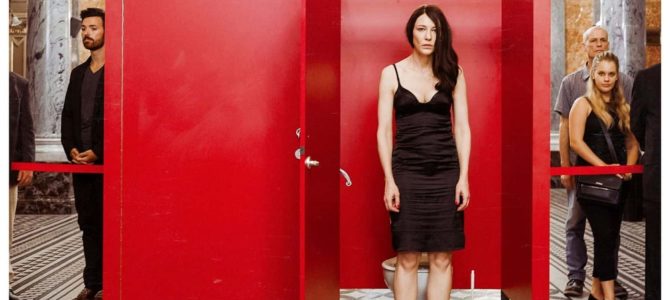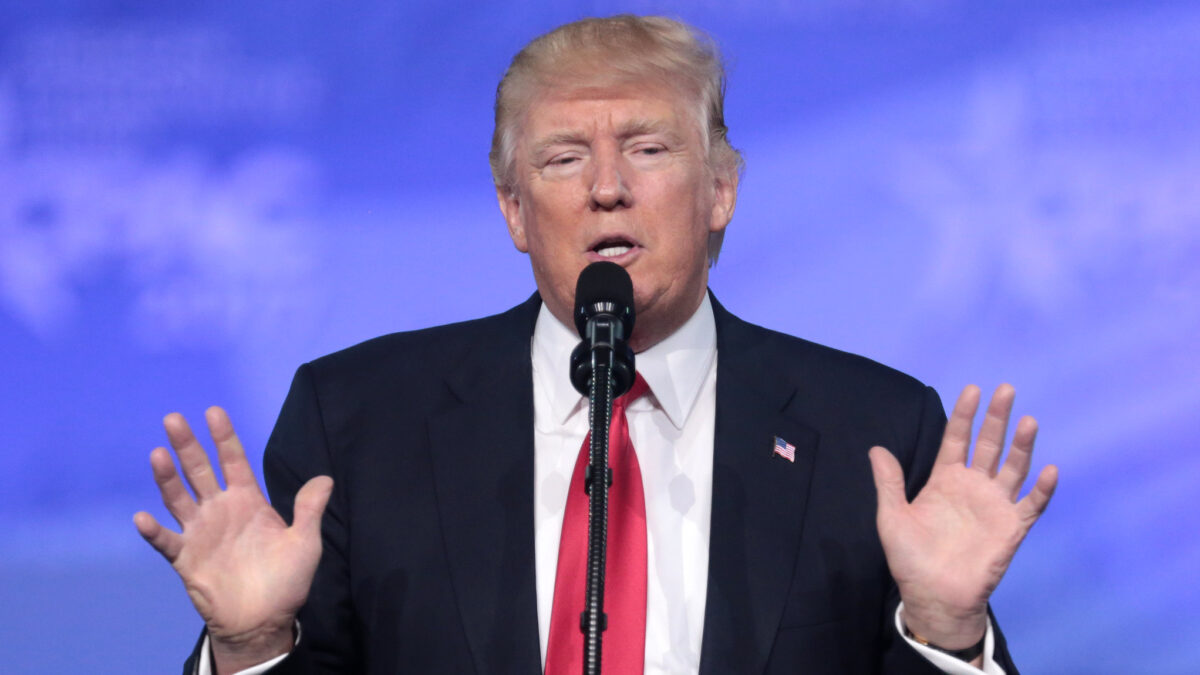
As we near the end of 2019, and the run of new exhibitions goes into hibernation until February, now seems an opportune moment to take a step back and look at some of the most important, or at least the most interesting, news that emerged from the art world in the months gone by.
From the exhibition that caused Brooke Shields to tape a banana to her forehead on Instagram to the ringing of shaming bells outside and inside our cultural institutions, to the underreported titanic battle about to begin between the art world’s two largest corporations, it’s been a weird, fascinating subject area to cover, as usual. While reasonable minds may differ about to what the top five art stories of 2019 were, I don’t think there’s any question that the story that kicks off this list was the most important of all.
1. The Burning of Notre Dame
Watching the flames ravage the Cathedral-Basilica of Notre Dame de Paris was something of a macabre experience, shared via live broadcast and online by people around the world. Fortunately, no one died in the blaze, but at first it seemed the cultural loss would be incalculable.
Or at least, that’s what many of us thought, until the fires were finally brought under control, and it was safe enough for investigators to venture inside. Their cameras revealed that the church was not only still standing, but that the high altar was still there as well, its giant cross gleaming through the darkness as the cross has always done: a stumbling block to some, and foolishness to others, to paraphrase St. Paul.
After a number of truly awful missteps, including outlandish but fortunately rejected plans to radically alter the building, thereby putting its UNESCO World Heritage status at risk, and a slow-to-dawn realization by officialdom regarding the environmental hazards unleashed by the conflagration of the thousands of pounds of lead that made up the church’s roof, things seem to be getting on track toward restoration. Promised donations have materialized, including massive amounts given by two of France’s richest men, showing there was more than just talk behind all the social media posts and press releases calling for the rebuilding of the most famous church in France.
Looking ahead to 2020 and beyond, French President Emmanuel Macron’s goal of completing Notre Dame’s rebuilding in time for the Paris Olympics in 2024 remains, in the eyes of many, little more than an unrealistic, politically motivated promise. Still, stranger things have happened, and we forget the significance of this church to the collective identity of the French at our peril. Provided that recent infighting, such as that between the former army general overseeing the project and its chief architect, doesn’t become too Gallic, perhaps by this time next year we’ll see some real progress being made.
2. Activist Museum Shaming
First opioids, then tear gas, now fossil fuels: if it weren’t for the truly historic Notre Dame fire, the public shaming of museums by activist groups would undoubtedly have been the major art news story of the year. Back in the summer, I looked at how some pressure groups are having a disproportionately large impact on artistic and cultural institutions here and abroad. It’s a trend related to cancel culture that we discussed on the Federalist Radio Hour a few months later.
Since then, naming and shaming has continued apace. While publicly denying that it is doing so, the Smithsonian appears to have bowed to public and even congressional pressure, and recently removed the Sackler name in a “rebranding” exercise, now referring to both the Sackler Gallery and the conjoined Freer Gallery as the “Smithsonian Asian Art Museum.”
No one disputes the fact that the late Arthur Sackler, founder of the family fortunes, had nothing to do with OxyContin, the opioid created after his death. Yet that hasn’t stopped the mainstream media, or U.S. presidential candidate Sen. Elizabeth Warren, from calling on institutions such as Harvard University to remove the Sackler name from the Arthur M. Sackler Museum at that institution, and from any other institution that received funding from any of the Sacklers.
Meanwhile, as the Sackler name disappears from cultural institutions both here and overseas, the fossil fuels industry is becoming the preferred target for many activists targeting museum acceptance of corporate or individual sponsorship.
Back in October, members of one of these groups poured (fake) oil all over themselves at the National Portrait Gallery in London, to protest that museum’s receipt of donations from British Petroleum, while the Royal Shakespeare Company announced it would no longer accept funds from the fuel giant. A month later, protesters dressed as Greek gods and goddesses covered themselves in faux oil at the opening of the British Museum’s new exhibition on Ancient Troy, which had also been sponsored by BP.
Matters won’t end there, however. There are currently plans afoot to trundle some sort of Trojan Horse, presumably filled with fake oil, up to the entrance of the British Museum in February of next year as part of a mass protest. Although we haven’t seen anything on this scale yet on these shores, the reader should not doubt for one moment that it’s only a matter of time before it becomes widespread in the United States—and who knows which industries or individuals will be targeted as a result.
3. The 500th Anniversary of Leonardo da Vinci’s Death
For the 500th anniversary of the death of Leonardo da Vinci (1452-1519), commemorations of his life and work popped up everywhere this year, in culture and commerce, publishing and entertainment. What was supposed to be the highlight of the year, a once-in-a-lifetime retrospective on his work at the Louvre in Paris, had everyone asking one question: Will the “Salvador Mundi,” the most expensive painting ever sold at auction—and unquestionably the art story of the year for 2017—show up to the party?
The answer, as it turned out, was no, even though contingency plans had been made by the museum just in case. As of this writing, the “Salvador Mundi” still hasn’t been seen in public since it was sold, and seemingly every week new theories appear in both the art press and the mainstream media regarding where it is, and why it has seemingly vanished.
At one time, the picture was supposedly going on long-term loan to the Louvre Abu Dhabi, but to date, that hasn’t happened. Some pundits speculate that the owner simply decided to keep the picture for himself. Others are rumoring that the attribution to Leonardo, which was always hotly disputed in some corners, is now being seriously questioned, and to save face the painting is being kept out of sight for the time being.
No one knows for sure, but if and when the picture does resurface, it will no doubt create a firestorm of attention, demonstrating the continued importance of an Old Master painter who’s been dead for half a millennium.
4. The Sale of Sotheby’s
The two most powerful auction houses in the world, Sotheby’s and Christie’s, were founded in London in the 18th century, at a time the art business as we know it today was just beginning to take shape. Now, for the first time in a number of years, the Coke and Pepsi of the art world are about to start competing on similar footing again. French telecom tycoon Patrick Drahi made an offer to purchase Sotheby’s in June for around $3.7 billion, that bid was approved by the shareholders in September, and as of October the company’s stock is no longer traded.
It’s the same path Christie’s took back in 1998, when it was acquired by French luxury goods billionaire François-Henri Pinault, and the company has reaped the rewards of that move. For nearly a decade now Christie’s numbers have regularly beat Sotheby’s, with sales in 2018 totaling around $7 billion for the former and $5.2 billion for the latter. Privately held companies, as you may know, are required to disclose far less information than those which are publically traded, and that level of discretion has served Christie’s well in the high-stakes game of international art dealing.
What will happen to the art market in the year ahead, now that the two largest companies in that market are going to be more evenly matched, no one knows. Yet from both a cultural and an economic perspective, this isn’t something to be sneezed at as a mere numbers game.
Between them, Sotheby’s and Christie’s presently control something like 80 percent of the annual sales of art valued at over $1 million, which has a tremendous effect on the type of art being acquired by private collectors as well as public institutions.
Will prices spiral even further into the stratosphere, or will the market bubble, which to now has largely been kept inflated through the sale of very expensive works of Modern and Contemporary Art to new billionaires, finally burst when there’s more than one purveyor of private transactions in town? Stay tuned.
5. Taped Bananas
I’m almost loath to comment on the art world story that captured everyone’s attention at the end of 2019, i.e., the infamous work known as “Comedian” by contemporary artist Maurizio Cattelan (1960— ), who until now was probably best known for creating a solid gold toilet titled “America,” or a sculpture of Pope St. John Paul II being struck and killed by a meteorite.
The piece, which consists of a banana duct-taped to the wall at a local gallery as part of the Art Basel Miami Beach show, was sold to a French art collector for $120,000, but while still on display was eaten by another artist as part of a performance piece. However since the art was an “idea,” rather than an individual piece, the gallery simply recreated it.
The story rather nicely dovetails with the best art-related film of the year, in which the type of work created by artists like Cattelan, the members of the art world intelligentsia who support it, and the collectors who pay enormous sums for it, are all mercilessly skewered. “Waiting For The Artist,” a mockumentary produced for the “Documentary Now!” series on Independent Film Channel, stars Cate Blanchett as Izabella Barta, a performance artist preparing for a retrospective of her career.
Barta’s work, appearance, and mannerisms are based on those of Marina Abramović (1946—), the reigning queen of performance art. The film also chronicles Barta’s twisted relationship with her former lover, an artist rather like Cattelan in many respects, who became famous when he displayed and sold random objects purchased at a corner grocery store for astronomical sums because he deemed them to be art.
The episode was based on the film “The Artist Is Present” (2010), a genuine documentary on Abramović and her art that was widely praised as an intense portrait of one of the most lauded artists working today. Those with a more rational frame of mind probably found themselves scratching their heads and laughing at it, most of the time. Without meaning to, the original documentary neatly encapsulates everything that has gone wrong with both the art world and indeed with Western culture over the past 50 years or so.
As such, if the original is unintentionally comic, the spoof is fully, unapologetically ridiculous. You truly haven’t lived until you’ve seen Cate Blanchett wearing a bicycle helmet being spun around inside a giant clothes dryer as part of an art piece. So my final art advice to you for the year is, once the kiddos have gone to bed, be sure to track down the episode for your vacation-viewing pleasure.









